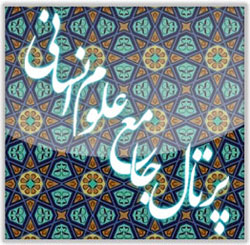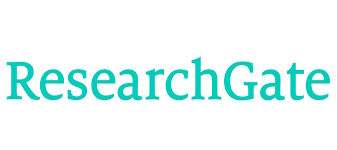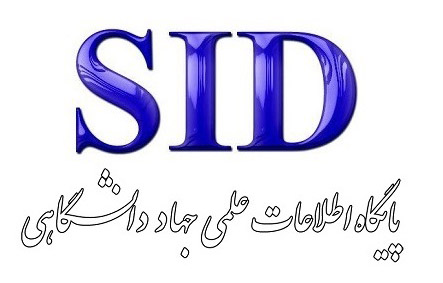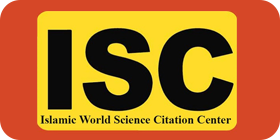طراحی الگوی پرورش خلاقیت برای دانشآموزان دوره متوسطه اول در درس جغرافیا استان ذیقار با رویکرد دادهبنیاد نوظهور
کلمات کلیدی:
خلاقیت , دوره متوسطه, سازمانی, آموزشی, نیروی انسانی, اجتماعی, اقتصادیچکیده
هدف: هدف این پژوهش، طراحی الگوی پرورش خلاقیت برای دانشآموزان دوره متوسطه اول در درس جغرافیای استان ذیقار عراق با استفاده از رویکرد دادهبنیاد نوظهور است. روششناسی: این پژوهش از نوع کیفی و از نظر هدف کاربردی است که با رویکرد دادهبنیاد نوظهور انجام شد. جامعه آماری شامل خبرگان حوزه تعلیم و تربیت و روانشناسی بود که با نمونهگیری نظری و تا رسیدن به اشباع نظری، ۱۵ نفر از آنها انتخاب شدند. ابزار گردآوری دادهها مصاحبه نیمهساختاریافته بود و تحلیل دادهها طی مراحل کدگذاری باز، محوری و انتخابی انجام شد. سپس ابعاد، مؤلفهها و شاخصهای الگو با مشارکت خبرگان نهاییسازی، اولویتبندی و اعتباریابی شد. یافتهها: یافتهها نشان داد که الگوی پرورش خلاقیت دارای ۴ بعد اصلی (سازمانی، آموزشی، نیروی انسانی، اجتماعی/اقتصادی)، ۱۴ مؤلفه و ۱۰۲ شاخص است. مؤلفههای مهم شامل فرهنگ سازمانی، ساختار، برنامهریزی آموزشی، محتوای درسی، روش تدریس، ارزشیابی، تجهیزات آموزشی، خانواده، دانشآموز، معلمان، مدیران، رسانه، منابع مالی و اثربخشی اجتماعی بودند. بیشترین اولویت بر مؤلفههایی چون فرهنگ سازمان، برنامهریزی، خانواده و رسانه قرار گرفت. نتیجهگیری: الگوی پیشنهادی میتواند در تدوین سیاستهای آموزشی مؤثر برای پرورش خلاقیت در درس جغرافیا مورد استفاده قرار گیرد. توجه به ابعاد سازمانی، زیرساختهای آموزشی، تقویت عوامل انسانی و فراهمسازی شرایط اجتماعی-اقتصادی مناسب از الزامات تحقق این الگو است. این پژوهش با ارائه مدلی بومیشده، میتواند راهگشای بهبود نظام آموزشی و تربیت نیروی انسانی خلاق در سطح متوسطه باشد.
دانلودها
مراجع
Anser, M. K., Yousaf, Z., Sharif, M., Yijun, W., Majid, A., & Yasir, M. (2020). Investigating employee creativity through employee polychronicity and employee resilience: a glimpse of nurses working in the health-care sector. European Journal of Innovation Management. https://doi.org/10.1108/EJIM-05-2020-0176
Arnout, B. A., & Almoied, A. A. (2020). A structural model relating gratitude, resilience, psychological well‐being and creativity among psychological counsellors. Counselling and Psychotherapy Research. https://doi.org/10.1002/capr.12316
Asadi, M., & Ahmadabadi, A. (2023). Effective teaching strategies in geography education (Case study: Tenth-grade humanities). Research in Social Studies EducationVL - 5(4), 18. https://alborzmag.cfu.ac.ir/
Baghaei, H., Akbari, S., & Tolooei, L. (2023). Creativity and innovations in schools. 1st International Conference on Sociology, Social Sciences and Education with a Future Perspective, Bushehr, https://sspp.iranjournals.ir/article_631_0.html?lang=en
Cenberci, S. P. (2018). The Investigation of the Creative Thinking Tendency of Prospective Mathematics Teachers in Terms of Different Variables. Journal of Education and Training Studies, 6. https://doi.org/10.11114/jets.v6i9.3434
Dhany, K. R., & Yulianti, D. (2025). The Prospects and Challenges of STEM-PjBL with Design Thinking Strategies in Enhancing Students' Creativity and Entrepreneurial Thinking in the Context of Plastic Waste Recycling: Teachers' Perspectives. Jurnal Penelitian Pendidikan Ipa, 11(1), 28-37. https://jppipa.unram.ac.id/index.php/jppipa/article/view/9357
Dolatshahi, Z., & Toolabinejad, M. (2023). Factors and effective strategies in teaching geography. https://civilica.com/doc/1940571
Eimani, H., Nokhsareh Zadi, H., Asadi, M., & Shani, S. A. (2024). Increasing creativity and innovation of students in educational centers. 4th International Conference on Educational Sciences, Counseling, Psychology and Social Sciences, Hamedan, https://civilica.com/doc/2208210
Fakhari Mobarakeh, F., Etemadi Ahari, A., & Saber Gorgani, A. (2022). Creative education model for elementary school students (with emphasis on the sixth grade of elementary school). Rah, 12(1), 45-228. https://journals.iau.ir/article_695406.html
Jae, H. L., & Soyeon, L. (2023). Relationships between physical environments and creativity: A scoping review. Thinking Skills and Creativity, 48. https://doi.org/10.1016/j.tsc.2023.101276
Jafari Rameshti, M. (2023). The impact of creativity-based training on the academic performance of second-grade elementary school students. 14th National Conference on Management and Humanities Research in Iran, Tehran, https://civilica.com/doc/1703513
Kaplan, D. E. (2019). Creativity in Education: Teaching for Creativity Development. Psychology, 10(2), 140-147. https://doi.org/10.4236/psych.2019.102012ER -
Li, Y., & Wu, D. (2025). Creativity and Well-Being Among College Students: The Mediating Role of Meaning in Life. The Journal of psychology, 159(1), 1-16.
Mahmoudi, S. N. (2021). Designing a situational creativity model based on a reflective training approach (Case study: Philosophy for Children program). Thinking and Child, 12(1), 289EP - 317. https://doi.org/10.30465/fabak.2021.6236
Nemati Yar, A., Sajjad, M., Mirzaei, N., Davoudi, R., Yasemi, S., Hosseini Khah, A., Kian, M., Geramipour, M., & Hosseini, A. S. (2022). Study and investigation of factors affecting creativity in high school students Designing a creative school model for elementary school and its validation from the perspective of experts. https://civilica.com/doc/1847541
Pirkhayefi, A., Hosseini, S. M. H., & Mohammadi, A. (2021). Designing a student creativity model based on a sense of belonging to school with the mediating role of resilience in schools of five military towns in Tehran. Military Psychology, 12(48), 41-57. https://jmp.ihu.ac.ir/article_206869_en.html?lang=fa
Rahmati, F., Pardakhtchi, M. H., Sanjari, A. R., & Hasan Moradi, N. (2022). Designing a creativity development model for female secondary school students in Tehran schools. Journal of Educational Leadership and Management, 16(3), 61-212. https://www.qijes.com/index.php/ijes/article/view/978
Ranjbar, M. (2020). The impact of art in education and learning and the emergence of creativity in students. 3rd International Conference on Psychology, Educational Sciences and Social Studies, Hamedan, https://search.proquest.com
Robinson, K., Aronica, L., Abolfazl Bakhtiari, S. M., & Marashi. (2020). Creative schools. Tehran: Tik and Avaye Noor Publications. https://www.academia.edu
Safaei, N., Zarei, E., & Samavi, A. (2021). Designing and modeling a curriculum based on creative thinking skills for elementary school students. Educational Technologies, 15(3), 579-590. https://jte.sru.ac.ir
Setiani, R., Widiasih, W., Suparti, S., Dwikoranto, D., & Bergsma, L. N. (2025). Analysis of Student Creativity Assessment Instruments: Supporting SDGs and MBKM in Higher Education. IJORER: International Journal of Recent Educational Research, 6(1), 206-217. https://doi.org/10.46245/ijorer.v6i1.746
Sonja, V. (2023). Development of creativity in elementary school. Journal of Creativity, 33(2), 33-48. https://doi.org/10.1016/j.yjoc.2023.100055
Soudagar, E. (2020). Investigating the impact of teachers' information literacy on the development of creativity in elementary school students in Hamoon city. 5th National Conference on New Approaches in Education and Research, Mahmoudabad, https://aquila.usm.edu/jetde/vol17/iss1/14/
Stéphan, V.-L., Carlos, G.-S., & Mathias, B. (2019). Fostering Students' Creativity and Critical Thinking, Educational Research and InnovationCentre for Educational Research and Innovation, iOECD. https://doi.org/10.1787/62212c37-en
Tang, C., Mao, S., Naumann, S. E., & Xing, Z. (2022). Improving student creativity through digital technology products: A literature review. Thinking Skills and Creativity, 44, 234-244. https://doi.org/10.1016/j.tsc.2022.101032
Wang, J., Sheng, M., & Song, R. (2024). Enhancing Classroom Behaviors and Creativity: The Impact of a Critical Thinking Workshop. International Journal of Education and Cognitive Sciences, 5(1), 8-15. https://doi.org/10.61838/kman.ijecs.5.1.6
Widodo, R. M., Triwahyuni, E., & Emyus, A. Z. (2025). The Influence of Wordwall Game Media on Students' Creativity and Conceptual Understanding in Elementary Schools. Jurnal Penelitian Pendidikan Ipa, 11(1), 828-834. https://doi.org/10.29303/jppipa.v11i1.10239
Ying, J., & Parsakia, K. (2024). Behavioral Activation Therapy: Boosting Happiness and Creativity Among College Students. KMAN Counseling & Psychology Nexus, 2(2), 57-65. https://doi.org/10.61838/kman.psynexus.2.2.9
دانلود
چاپ شده
ارسال
بازنگری
پذیرش
شماره
نوع مقاله
مجوز
حق نشر 2025 أمجد فنجان هويدي هویدي, عباس خورشیدی, رنا غانم حامد حامد, نرگس سعیدیان خوراسگانی (Author)

این پروژه تحت مجوز بین المللی Creative Commons Attribution-NonCommercial 4.0 می باشد.









